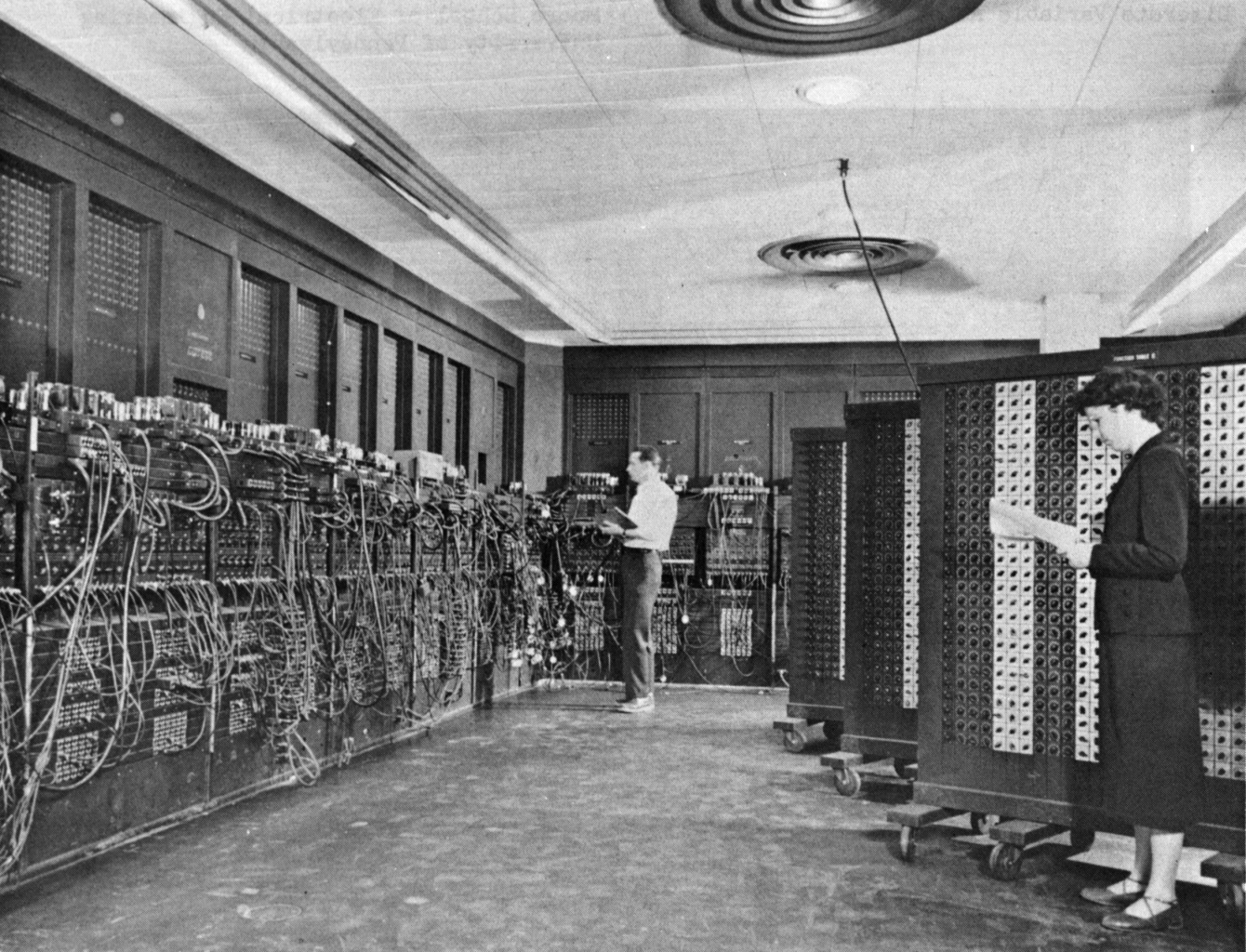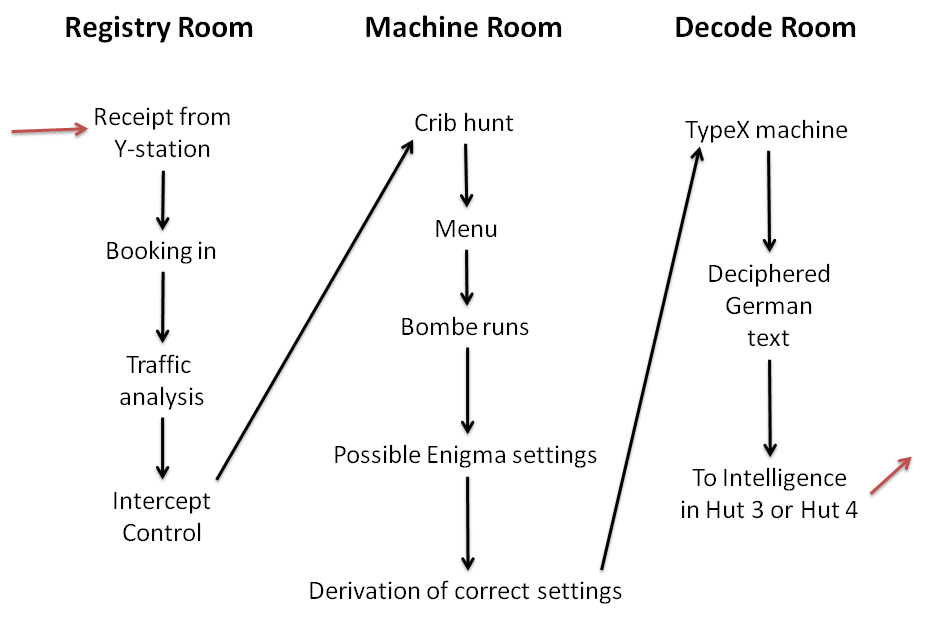|
Vacuum-tube Computer
A vacuum-tube computer, now termed a first-generation computer, is a computer that uses vacuum tubes for logic circuitry. While the history of mechanical aids to computation goes back centuries, if not millennia, the history of vacuum tube computers is confined to the middle of the 20th century. Lee De Forest invented the triode in 1906. The first example of using vacuum tubes for computation, the Atanasoff–Berry computer, was demonstrated in 1939. Vacuum-tube computers were initially one-of-a-kind designs, but commercial models were introduced in the 1950s and sold in volumes ranging from single digits to thousands of units. By the early 1960s vacuum tube computers were obsolete, superseded by second-generation transistorized computers. Much of what we now consider part of digital computing evolved during the vacuum tube era. Initially, vacuum tube computers performed the same operations as earlier mechanical computers, only at much higher speeds. Gears and mechanical relay ... [...More Info...] [...Related Items...] OR: [Wikipedia] [Google] [Baidu] |
GM-NAA I/O
The GM-NAA I/O input/output system of General Motors and North American Aviation was the first operating system for the IBM 704 computer. It was created in 1956 by Robert L. Patrick of General Motors Research and Owen Mock of North American Aviation. It was based on a system monitor created in 1955 by programmers of General Motors for its IBM 701. Patrick made Gantt charts which were already used in those days by GM for automotive production line design on how to make parallel processes fit together. The main function of GM-NAA I/O was to automatically execute a new program once the one that was being executed had finished (batch processing). It was formed of shared routines to the programs that provided common access to the input/output devices. Some version of the system was used in about forty 704 installations. See also * SHARE Operating System, an operating system based on GM-NAA I/O. * Multiple Console Time Sharing System *Timeline of operating systems *Resident monito ... [...More Info...] [...Related Items...] OR: [Wikipedia] [Google] [Baidu] |
First Draft Of A Report On The EDVAC
The ''First Draft of a Report on the EDVAC'' (commonly shortened to ''First Draft'') is an incomplete 101-page document written by John von Neumann and distributed on June 30, 1945 by Herman Goldstine, security officer on the classified ENIAC project. It contains the first published description of the logical design of a computer using the stored-program concept, which has come to be known as the von Neumann architecture; the name has become controversial due to von Neumann's failure to name other contributors. History Von Neumann wrote the report by hand while commuting by train to Los Alamos, New Mexico and mailed the handwritten notes back to Philadelphia. Goldstine had the report typed and duplicated. While the date on the typed report is June 30, 24 copies of the ''First Draft'' were distributed to persons closely connected with the EDVAC project five days earlier on June 25. Interest in the report caused it to be sent all over the world; Maurice Wilkes of Cambridge ... [...More Info...] [...Related Items...] OR: [Wikipedia] [Google] [Baidu] |
John Von Neumann
John von Neumann ( ; ; December 28, 1903 – February 8, 1957) was a Hungarian and American mathematician, physicist, computer scientist and engineer. Von Neumann had perhaps the widest coverage of any mathematician of his time, integrating Basic research, pure and Applied science#Applied research, applied sciences and making major contributions to many fields, including mathematics, physics, economics, computing, and statistics. He was a pioneer in building the mathematical framework of quantum physics, in the development of functional analysis, and in game theory, introducing or codifying concepts including Cellular automaton, cellular automata, the Von Neumann universal constructor, universal constructor and the Computer, digital computer. His analysis of the structure of self-replication preceded the discovery of the structure of DNA. During World War II, von Neumann worked on the Manhattan Project. He developed the mathematical models behind the explosive lense ... [...More Info...] [...Related Items...] OR: [Wikipedia] [Google] [Baidu] |
Hydrogen Bomb
A thermonuclear weapon, fusion weapon or hydrogen bomb (H-bomb) is a second-generation nuclear weapon design. Its greater sophistication affords it vastly greater destructive power than first-generation nuclear bombs, a more compact size, a lower mass, or a combination of these benefits. Characteristics of nuclear fusion reactions make possible the use of non-fissile depleted uranium as the weapon's main fuel, thus allowing more efficient use of scarce fissile material. Its multi-stage design is distinct from the usage of fusion in simpler boosted fission weapons. The first full-scale thermonuclear test ( Ivy Mike) was carried out by the United States in 1952, and the concept has since been employed by at least the five recognized nuclear-weapon states and UNSC permanent members: the United States, Russia, the United Kingdom, China, and France. The design of all thermonuclear weapons is believed to be the ''Teller–Ulam configuration'', in which a fission bomb primary ... [...More Info...] [...Related Items...] OR: [Wikipedia] [Google] [Baidu] |
ENIAC
ENIAC (; Electronic Numerical Integrator and Computer) was the first Computer programming, programmable, Electronics, electronic, general-purpose digital computer, completed in 1945. Other computers had some of these features, but ENIAC was the first to have them all. It was Turing-complete and able to solve "a large class of numerical problems" through reprogramming. ENIAC was designed by John Mauchly and J. Presper Eckert to calculate artillery external ballistics, firing tables for the United States Army's Ballistic Research Laboratory (which later became a part of the United States Army Research Laboratory, Army Research Laboratory). However, its first program was a study of the feasibility of the thermonuclear weapon. ENIAC was completed in 1945 and first put to work for practical purposes on December 10, 1945.* ENIAC was formally dedicated at the University of Pennsylvania on February 15, 1946, having cost $487,000 (), and called a "Giant Brain" by the press. It had ... [...More Info...] [...Related Items...] OR: [Wikipedia] [Google] [Baidu] |
Konrad Zuse
Konrad Ernst Otto Zuse (; ; 22 June 1910 – 18 December 1995) was a German civil engineer, List of pioneers in computer science, pioneering computer scientist, inventor and businessman. His greatest achievement was the world's first programmable computer; the functional program-controlled Turing completeness, Turing-complete Z3 (computer), Z3 became operational in May 1941. Thanks to this machine and its predecessors, Zuse is regarded by some as the inventor and father of the modern computer. Zuse was noted for the S2 computing machine, considered the first process control computer. In 1941, he founded one of the earliest computer businesses, producing the Z4 (computer), Z4, which became the world's first commercial computer. From 1943 to 1945 he designed Plankalkül, the first high-level programming language. In 1969, Zuse suggested the concept of a digital physics, computation-based universe in his book (''Calculating Space''). Much of his early work was financed by his f ... [...More Info...] [...Related Items...] OR: [Wikipedia] [Google] [Baidu] |
Heath Robinson (codebreaking Machine)
Heath Robinson was a machine used by British codebreakers at the Government Code and Cypher School at Bletchley Park during World War II in cryptanalysis of the Lorenz cipher. This achieved the decryption of messages in the German teleprinter cipher produced by the Lorenz SZ40/42 in-line cipher machine. Both the cipher and the machines were called "Tunny" by the codebreakers, who named different German teleprinter ciphers after fish. It was mainly an electro-mechanical machine, containing no more than a couple of dozen valves (vacuum tubes), and was the predecessor to the electronic Colossus computer. It was dubbed "Heath Robinson" by the Wrens who operated it, after cartoonist William Heath Robinson, who drew immensely complicated mechanical devices for simple tasks, similar to (and somewhat predating) Rube Goldberg in the U.S. The functional specification of the machine was produced by Max Newman. The main engineering design was the work of Frank Morrell at the Post Off ... [...More Info...] [...Related Items...] OR: [Wikipedia] [Google] [Baidu] |
Bletchley Park
Bletchley Park is an English country house and Bletchley Park estate, estate in Bletchley, Milton Keynes (Buckinghamshire), that became the principal centre of Allies of World War II, Allied World War II cryptography, code-breaking during the Second World War. During World War II, the estate housed the Government Code and Cypher School (GC&CS), which regularly penetrated the secret communications of the Axis Powers most importantly the German Enigma machine, Enigma and Lorenz cipher, Lorenz ciphers. The GC&CS team of codebreakers included John Tiltman, Dilwyn Knox, Alan Turing, Harry Golombek, Gordon Welchman, Conel Hugh O'Donel Alexander, Hugh Alexander, Donald Michie, W. T. Tutte, Bill Tutte and Stuart Milner-Barry. The team at Bletchley Park devised automatic machinery to help with decryption, culminating in the development of Colossus computer, Colossus, the world's first programmable digital electronic computer. Codebreaking operations at Bletchley Park ended in 1946 and al ... [...More Info...] [...Related Items...] OR: [Wikipedia] [Google] [Baidu] |
Fish (cryptography)
Fish (sometimes capitalised as FISH) was the UK's GC&CS Bletchley Park codename for any of several German teleprinter stream ciphers used during World War II. Enciphered teleprinter traffic was used between German High Command and Army Group commanders in the field, so its intelligence value ( Ultra) was of the highest strategic value to the Allies. This traffic normally passed over landlines, but as German forces extended their geographic reach beyond western Europe, they had to resort to wireless transmission. Bletchley Park decrypts of messages enciphered with the Enigma machines revealed that the Germans called one of their wireless teleprinter transmission systems "" ('sawfish') which led British cryptographers to refer to encrypted German radiotelegraphic traffic as "Fish." The code "Tunny" ('tuna') was the name given to the first non-Morse link, and it was subsequently used for the Lorenz SZ machines and the traffic enciphered by them. History In June 1941, the Briti ... [...More Info...] [...Related Items...] OR: [Wikipedia] [Google] [Baidu] |
Colossus Computer
Colossus was a set of computers developed by British cryptanalysis, codebreakers in the years 1943–1945 to help in the cryptanalysis of the Lorenz cipher. Colossus used vacuum tube, thermionic valves (vacuum tubes) to perform Boolean algebra (logic), Boolean and counting operations. Colossus is thus regarded as the world's first computer programming, programmable, electronics, electronic, digital electronics, digital computer, although it was programmed by switches and plugs and not by a stored-program computer, stored program. Colossus was designed by General Post Office (GPO) research telephone engineer Tommy Flowers based on plans developed by mathematician Max Newman at the Government Code and Cypher School at Bletchley Park. Alan Turing's use of probability in cryptanalysis (see Banburismus) contributed to its design. It has sometimes been erroneously stated that Turing designed Colossus to aid the cryptanalysis of the Enigma. (Turing's machine that helped decode Enigma ... [...More Info...] [...Related Items...] OR: [Wikipedia] [Google] [Baidu] |
Colossus Computer, Bletchley Park - Geograph
Colossus, Colossos, or the plural Colossi or Colossuses, may refer to: Statues * Any exceptionally large statue; colossal statues, are generally taken to mean a statue at least twice life-size ** List of tallest statues ** :Colossal statues * '' Apennine Colossus'', a stone statue created as a personification of the Apennine mountains * '' Colossus of Barletta'', a bronze statue of an unidentified Roman emperor * ''Colossus of Constantine'', a bronze and marble statue of the Roman emperor Constantine the Great * ''Colossi of Memnon'', two stone statues of Pharaoh Amenhotep III * ''Colossus of Nero'', a bronze statue of the Roman emperor Nero * '' Colossus of Ramesses II'' * ''Colossus of Rhodes'', a bronze statue of the Greek god Helios Amusement rides * Colossus (Ferris wheel), Ferris wheel at Six Flags St. Louis, Missouri, US * ''Colossus'', a pirate ship at Robin Hill theme park, Isle of Wight, UK Roller coasters * Colossos (Heide Park), in Lower Saxony, Germany * Coloss ... [...More Info...] [...Related Items...] OR: [Wikipedia] [Google] [Baidu] |








